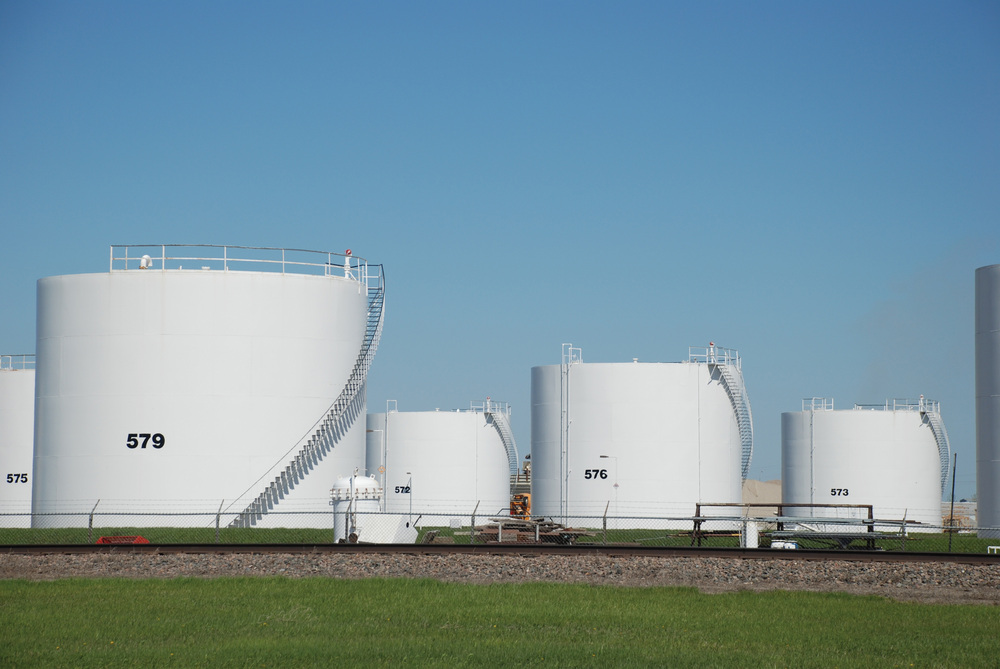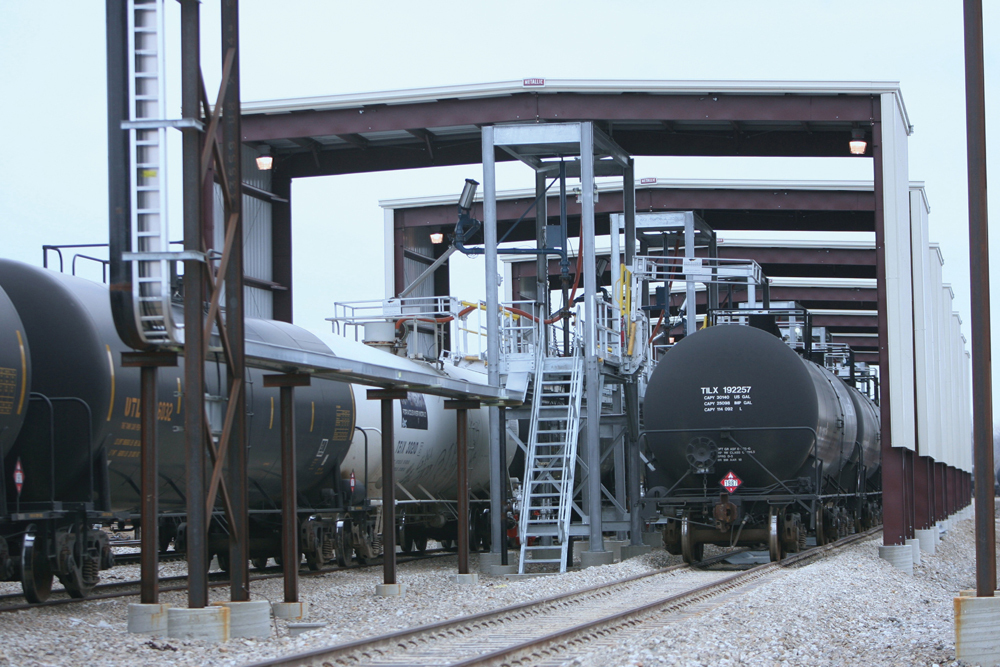Regulatory Impact on Terminal Requirements




June 14, 2011
BY Naved Reza
Today’s petroleum industry is at a crossroads. The U.S. government has set regulations to drive sustainability and reduce external dependency on hydrocarbon-based products, such as the renewable fuel standard program as required by the Energy Independence and Security Act of 2007. As a result, the petroleum industry is under increased pressure to meet these requirements, and must implement improved technology for the measurement and control of renewable fuels blending.
Achieving the optimal blending of crude, gasoline and diesel fuel in refineries is challenging, but the importance of blending is migrating downstream to bulk storage and distribution terminals in the U.S., and will likely only increase as the adoption of renewable fuels accelerates.
This situation has taken on an even greater urgency with the establishment of the revised renewable fuel standard, or RFS2. RFS2 establishes specific annual volume standards for cellulosic biofuel, biomass-based diesel, advanced biofuel and total renewable fuel that must be part of the U.S. fuel supply. It also includes new definitions and criteria for both renewable fuels and the feedstocks used to produce them. These statutory requirements will have a significant impact on operations within the petroleum and petrochemical refining, storage and distribution sectors.
This host of regulations and standards are impacting the way manufacturers design their overall blending systems. Advances in smart blending technologies, however, are making it easier to achieve compliance while streamlining operations. Before examining technologies, it’s important to have a thorough understanding of the actual industry standards and their impact on day-to-day operations.
Global Standards for Measurement Accuracy
Governments around the world are implementing new standards addressing various aspects of the alternative and renewable fuels industry, including custody transfer measuring equipment and systems. In Europe, for example, the Measuring Instruments Directive applies to custody transfer metering for liquids and gases, and is applicable in all 27 European Union countries, plus Norway and Switzerland. As a consequence of this legislation, enhanced accuracy and security are required for biofuel blending operations serving automotive fuel marketers.
The MID contains specific articles known as annexes for 10 different instrument categories. The annex relevant to the measurement of petroleum products is based on the International Organization of Legal Metrology Recommendation R117-1. One of the key requirements in the MID is that the total fuel metering system must perform within the accuracy specification—not just specific components. Not only are flowmeters subject to MID certification, other essential parts of the metering system are, as well, including temperature transmitters, biofuel blend controllers, electronic volume converters and air eliminators.
U.S. Regulations for Renewable Fuel
For bulk petroleum storage and distribution terminals in the United States, the introduction of biofuels into the mainstream fuels market, coupled with stringent renewable fuels standards imposed by the federal government, has generated the need for a significant investment in improved blending measurement and control technology.
On Feb. 3, 2010, the U.S. EPA, responding to the requirements of EISA, issued the RFS2 regulations mandating the use of 36 billion gallons of renewable fuel in the U.S. by 2022. RFS2 puts into motion the first-ever regulatory program for establishing the greenhouse gas (GHG) performance of the nation's transportation fuels.
Advertisement
The RFS2 regulations contain four separate categories of fuels, each with their own feedstock and performance criteria. Obligated parties, such as petroleum refineries, ethyl alcohol manufacturers, petroleum bulk stations and terminals, and petroleum and petroleum products merchant wholesalers, are required to include specific amounts of renewable fuels in the fuels they provide to consumers. RFS2 mandates that U.S. gasoline and diesel include 12.950 billion gallons of total renewable fuel, 950 million gallons of advanced biofuels, 650 million biomass-based diesel, and 100 million gallons of cellulosic biofuel.
Increased Demands on Terminal Operators
As with any new industry regulation, a host of issues exist, and such is the case for RFS2. Those issues must be understood by those who manufacture control and metering equipment for biofuel blending, and by those who seek to use it. Increasingly, the U.S. fuels marketing industry is focusing on the precision of the systems it uses to create product combinations as mandated by federal law.
The petroleum distribution sector is faced with a host of challenges when it comes to renewable fuels blending, including the design and performance of mechanical hardware (wetted), electronic control, reconciliation and reporting, weights and measures, and hazardous area control. The specific demands on refineries and terminal owners and operators include:
• Enhanced accuracy and control of blend components (i.e., “I need to be sure my blend is on-spec from the start to the finish of the batch.”).
• Increased security and monitoring of the blend process (i.e., “How can I be sure of an accurate blend even under fault conditions?”).
• Optimized tracking and traceability of calibration functions (i.e., “How can I verify my systems have been correctly calibrated?”).
• High visibility of the blend process for maximum operational uptime (i.e., “I lack the ability to rapidly pinpoint failure modes for fast reinstatement.”).
• Ease of transaction data withdrawal for efficient reporting within a secure environment (i.e., “I need to be able to report comprehensive data to the authorities with respect to my renewable fuels operations.”).
Advanced Technology for Blending Operations
A new generation of “smart blending” technology can provide significant benefits for the global petroleum refining, storage and distribution sector. Today’s advanced blending control systems not only help end users comply with strict accuracy standards, but are also faster and easier to configure and maintain than previous equipment.
Advertisement
For many biofuel producers, the use of an integrated system solution is the most efficient way of ensuring compliance with complex regulatory standards. An integrated system can alleviate the need to understand the technical intricacies of each component of a blending control system. Instead, terminal operators only need to understand their end requirements.
By taking a system solution approach, petroleum storage and distribution facilities can partner with a single automation provider and entrust full responsibility for their blending activities and transactions. So what key elements comprise such systems, and what should producers look for?
First, self-diagnostics built into integrated solutions enable skilled and knowledgeable support personnel to remotely maintain the performance of blending units from anywhere in the world. Today’s integrated systems also include the first integrated additive and blend controllers to fully comply with the EU’s MID standards. Such systems employ a robust blending algorithm that helps companies achieve the highest blending accuracy to reduce off-spec blends and the costs associated with waste. These systems also feature controllers that enable either additive injection control or blending control. And, the controllers are optimized for seamless integration into the downstream fuels distribution sector.
These single-stream controller designs can incorporate 12 separate devices, each providing individual functionality configurable from within a single device and selectable via license key in order to optimize regulatory compliance. This enables key features such as real-time deviation graphs, which allow live monitoring of the actual biofuel blend ratio during the transfer process and refining of the blend control parameters.
In addition, today’s systems can provide improved flowmeter proving capabilities, enabling plant personnel to periodically check the accuracy of blending activities to ensure profitable operation. A calibration wizard can automatically capture every device calibration transaction, including time stamps, calibration volumes and meter serial numbers. A dashboard can then display complete device hardware diagnostics on a single screen to reduce the time spent on fault-finding by as much as 25 percent, compared to manual calibration.
The use of a menu-based screen can also help users cut field configuration time from hours to a few seconds. Systems also enable hand-held devices to connect to the system to make two-way data communication easier, and to quickly and securely transfer transaction data, configuration files and calibration records.
Improved Documentation of Critical Transactions
Producers today must also seek systems that document the accuracy and compliance of their biofuel metering processes. Some single-stream controllers, for instance, can implement a large transaction storage memory of more than 10,000 transactions, which allows the devices to operate for more than three months in standard operating conditions without losing any transactions. Alternatively, the controllers can have their transaction data securely downloaded via local access devices (LAD) and their memory cleared in preparation for storage of another 10,000 transactions. The transactions subsequently transferred to the LAD can then be manually transferred to any peripheral for storage or printing via secure digital card. They can also be distributed via object linking and embedding for process control to third-party systems for separate reconciliation.
Technology Investments for Future Payback
With the prospect of increasingly stringent government standards, the need to easily and accurately measure biofuel blends becomes more important and requires a more complex set of capabilities. As a result, the petroleum distribution industry must implement new smart metering and control technologies, which help terminal owners and operators verify regulatory compliance, minimize capital expenses using a single custody transfer solution, ensure on-spec product at any time, prevent giveaways of high-value products, and achieve the “perfect blend.” With additional insight and control, refinery and terminal operators can fine-tune fuel blending systems for increased reliability and performance. This can result in a significant payback in terms of easier fault-finding, fewer repairs and less downtime.
Author: Naved Reza
Global Marketing Leader, Honeywell Enraf
naved.reza@honeywell.com
Upcoming Events





